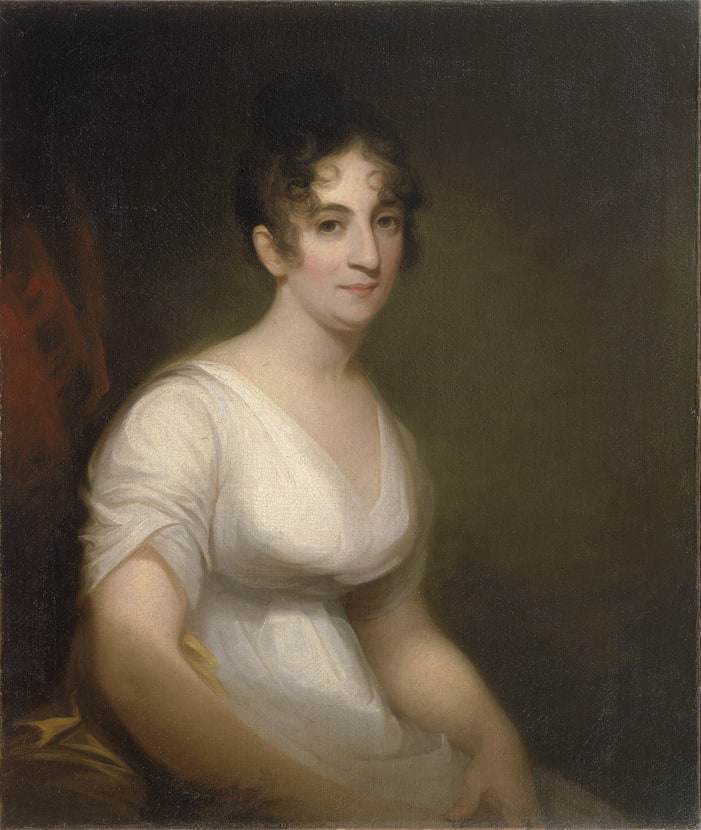
- Artist/Maker:
- Thomas Sully
- Bio:
- American, b. England, 1783-1872
- Title:
- Sally Etting
- Date:
- 1808
- Medium:
- Oil on canvas
- Dimensions:
- 30 × 25 in. (76.2 × 63.5 cm)
- Credit Line:
- Gift of William Wollman Foundation
- Accession Number:
- F 4610
Not On View
Portraiture remained the predominant aspect of American artistic production for the increasingly prosperous population during the Colonial period and in the early years after the Revolution. Portrait painter Thomas Sully was but one of the many artists to record the images of America's minuscule Jewish community. In fact, the list of other major artists to receive Jewish commissions is quite impressive and includes Gilbert Stuart, Rembrandt Peale, and John Wesley Jarvis.
Here, Sully depicts thirty-two-year-old Sally Etting in the fashionable Roman-inspired clothing and coiffure of the neoclassical era, a style well suited to the ideology and aspirations of the Federal period of the early Republic. The sitter was born in York, Pennsylvania, to a family that would maintain civic and social prominence for generations. Her father, Elijah Etting, a trader whose clientele was largely Native American, was also a supplier to the Revolutionary army. He died when she was a child, and her family subsequently moved to Baltimore.
Sally Etting's highly successful brother Reuben, and important political figure in Baltimore and Philadelphia, may have commissioned this likeness of his maiden sister. Sully's journals noted a portrait of another Miss Etting, perhaps Sally's sister, and several portraits of the prominent Gratz family of Philadelphia, relatives of the Ettings. This latter group includes the 1831 portrait of the renowned social activist Rebecca Gratz, the purported inspiration for Sir Walter Scott's heroine of Ivanhoe. It may have been these Philadelphians who suggested Sully's service to the Ettings.
Sally Etting's portrait was executed just three months after the English-born Sully first settled in Philadelphia, the city that would become his home for the remaining sixty-five years of his long career. The perseverance, industriousness, and talent he demonstrated during his first year there enable him to depart for London in 1809 to advance his artistic development. There upon the recommendation of Charles Willson Peale, he studied with the eminent English-based American artist Benjamin West. After returning to Philadelphia early in 1810, Sully took up portrait commissions and within twenty years had become one of America's most prominent portraitists. In the words of the historian William Dunlap, Sully was the "prince of American portrait painters."
Here, Sully depicts thirty-two-year-old Sally Etting in the fashionable Roman-inspired clothing and coiffure of the neoclassical era, a style well suited to the ideology and aspirations of the Federal period of the early Republic. The sitter was born in York, Pennsylvania, to a family that would maintain civic and social prominence for generations. Her father, Elijah Etting, a trader whose clientele was largely Native American, was also a supplier to the Revolutionary army. He died when she was a child, and her family subsequently moved to Baltimore.
Sally Etting's highly successful brother Reuben, and important political figure in Baltimore and Philadelphia, may have commissioned this likeness of his maiden sister. Sully's journals noted a portrait of another Miss Etting, perhaps Sally's sister, and several portraits of the prominent Gratz family of Philadelphia, relatives of the Ettings. This latter group includes the 1831 portrait of the renowned social activist Rebecca Gratz, the purported inspiration for Sir Walter Scott's heroine of Ivanhoe. It may have been these Philadelphians who suggested Sully's service to the Ettings.
Sally Etting's portrait was executed just three months after the English-born Sully first settled in Philadelphia, the city that would become his home for the remaining sixty-five years of his long career. The perseverance, industriousness, and talent he demonstrated during his first year there enable him to depart for London in 1809 to advance his artistic development. There upon the recommendation of Charles Willson Peale, he studied with the eminent English-based American artist Benjamin West. After returning to Philadelphia early in 1810, Sully took up portrait commissions and within twenty years had become one of America's most prominent portraitists. In the words of the historian William Dunlap, Sully was the "prince of American portrait painters."
Information may change as a result of ongoing research.